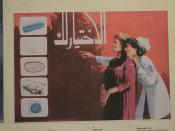Although many people in the United States may equate teen pregnancy with minorities in the inner city and lower class women from rural areas, this problem is growing to encompass the entire cross-section of American society. It has become a plague of sorts that perpetuates poverty through the decrease in desire to obtain education and job skills that the young mother may otherwise develop. This, in turn, expands the community of citizens living in conditions well below what constitutes the poverty line. While many efforts are made to educate the public to avoid this problem, it still exists, though at a lower rate than in the past. This paper will seek to explore historical perspectives of birth control and adolescent pregnancy, what factors put one at risk for teen pregnancy, the effects that teen pregnancy has on other members of the family, and policy improvements to lessen the problem and make it more manageable.
Over the past few decades, the view of teenage pregnancy from a societal outlook has graduated from an expectation of young married mothers to a social "problem" of sorts. According to Douglas Barnett, "Adolescent childrearing necessitates diverting resources to another before these premature parents have themselves achieved...self-sufficiency" (186). The main reason for the change in perception is due to the increase in age of a woman at first marriage, which changed from a median of 20.8 in 1970 to 24.5 in 1994. This, along with the decline of age at which girls partake in first intercourse, provides a broad length of time, estimated at 7 years, in which they put themselves at risk of having a nonmarital, and therefore unintended, pregnancy (Kahn, et al 29). In fact, 48% of pregnancies in the United States in 1994 were unintended (Fu et al, 56).
However, the problem began...


